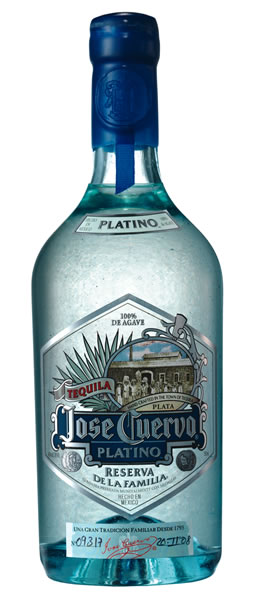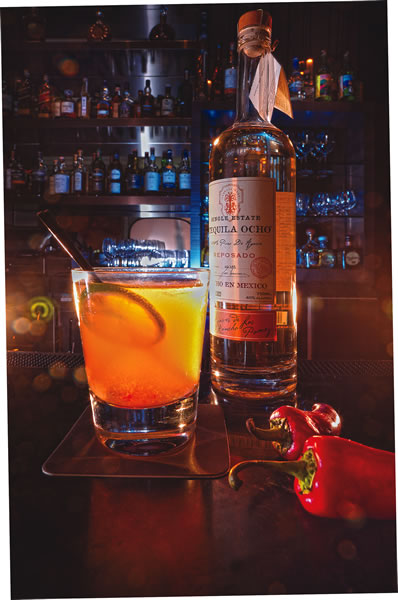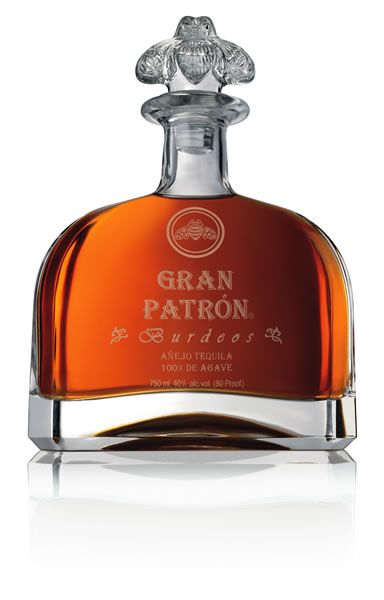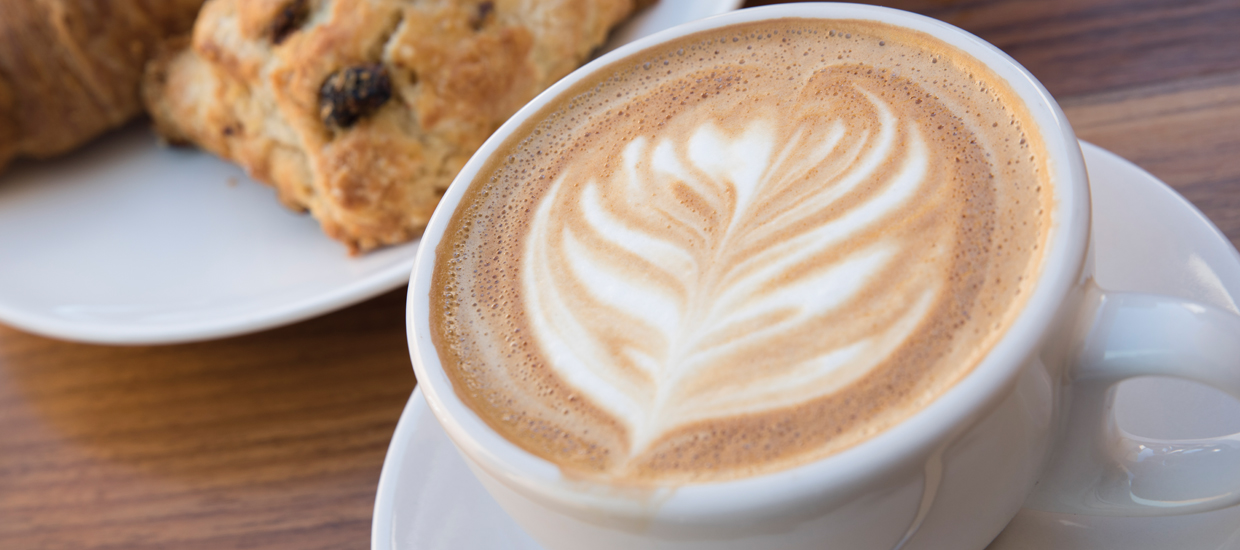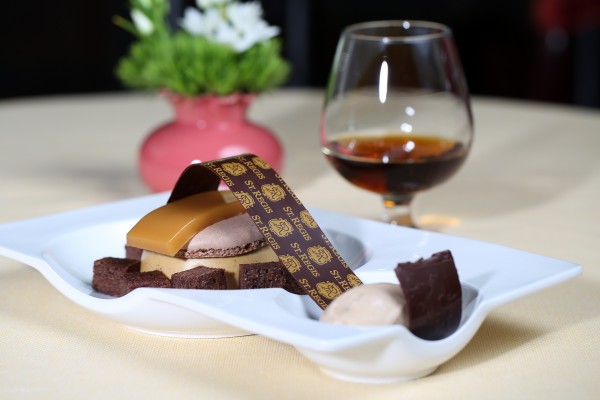A New Progeny of Aficionado
During the past three decades, Tequila has grown to become an ultra-premium spirit, spawning a new progeny of aficionado. By Sarah Pierce

 For decades, Americans’ knowledge of tequila was limited to the margarita and a shaker of salt. It’s only recently that a new breed of tequila—ultra-premium—has emerged, igniting a new love affair for the spirit marked by booming sales and a refined palate for agave.
For decades, Americans’ knowledge of tequila was limited to the margarita and a shaker of salt. It’s only recently that a new breed of tequila—ultra-premium—has emerged, igniting a new love affair for the spirit marked by booming sales and a refined palate for agave.
Ultra-premium tequila, made from 100 percent blue agave, is savored for its sophisticated, complex aromas and flavors, much like a fine cognac or single-malt scotch.
“Many people are pleasantly surprised by the tastes and versatility of 100 percent agave tequila,” says Greg Cohen, director of corporate communications for Patrón Spirits
The culprit behind most poor tequila experiences is the lower quality mixed tequila, made from only 51 percent agave. “People have started to recognize that there’s quite a big difference between a 100 percent agave tequila and a mixto tequila. They’re almost like two different spirits,” he adds.
It’s this awareness that has driven Americans to drink record amounts of tequila in the past 10 years. In 2011, Reuters reported that overall sales of tequila in the U.S. have grown by 47 percent since 2003, while sales of bottles in the super premium category ($22 and up) have increased by 317 percent. This shift toward the ultra-premium brands has revolutionized the way we think about tequila and spawned a new progeny of aficionado that is passionate about the nuances of agave.
“Tequila is one of those spirits that has craftsmanship, aging and style that has grown through the generations,” says Jennifer LaComba, bar manager at The St. Regis Aspen Resort. “It’s evolved through the years, been given different flavors and standards, but at the end of the day it’s the essence of the agave that still makes the best tequila and spirit.”
A Colorful History
To truly appreciate the evolution of tequila from the shot glass to the tasting glass, it is necessary to first understand its rich history. The majority of tequila is produced in the western Mexican state of Jalisco, primarily in the area surrounding the town of Tequila, about 40 miles northwest of Guadalajara. The hills of the area are rich in red volcanic soil, which helps the blue agave plant that tequila is derived from thrive. More than 300 million agave plants are harvested there each year, producing more than 50 million gallons of tequila annually.
The history of tequila begins with the Aztecs, who believed the blue agave plant was a gift from the gods and revered it as one of the most sacred plants in ancient Mexico. The Aztecs used the plant for a variety of purposes, but most famously for fermenting the agave sap into a milk-colored, low-alcohol beverage called pulque, which they used in religious ceremonies.
It was the Spanish conquistadors, however, who are responsible for the evolution of tequila into the high-alcohol spirit known today. According to folklore, when the conquistadors ran out of their own brandy, they distilled the fermented agave sap into a stronger spirit now known as mezcal. Further distillation resulted in tequila, making it the first distilled spirit made in North America.
Today, agave is still planted, tended and harvested by hand by skilled jimadors who possess generations of knowledge about the plants and the proper way to cultivate them.
“I’m partial to Tequila Ocho Reposado, which drinks like a whiskey or a scotch,” says Jal Hastings, Lobby Bar manager at The St. Regis San Francisco. “I also like that each bottle tells you the exact year and location of the agave plants that the spirit was derived from.”
Tequila Ocho is the only single estate tequila on the market producing annual vintages that differ from one another in nose and flavor, delivering “complexity of character” rather than “consistency in character.” Every vintage is different, reflecting the “terroir” of the agave, but expect notes of citrus, spice and strong agave.
Much like a vintner features single estate wines, Tequila Ocho features single estate tequilas showcasing agave harvested from different estates positioned at varying altitudes and climates— ensuring that each vintage is unique in aroma and flavor.
The Art of Tequila Tasting
Like a fine wine, scotch or cognac, ultra-premium tequila should be enjoyed properly to engage all your senses.
The Glass
Ultra-premium tequila should never be sipped from a shot glass, which compresses the aromas and doesn’t allow you to experience the full complexity of the agave flavor. This same concept applies to a snifter glass: Tequila has high alcohol content, so the small opening of a snifter will actually trap the agave aroma in the glass and fill your nose with the smell of alcohol instead. A true tequila aficionado will use a long-stemmed Riedel Ouverture Tequila Glass, which is specifically designed to lift fine tequila to the level it deserves. If an official tequila glass is not available, a white wine glass, as opposed to a snifter, is the best choice.
The Color
Examine the color of the tequila against a light background, tilting the glass away from you to inspect the quality of the liquid. Unlike 100 percent blue agave tequila, tequilas mixed with neutral spirits will have imperfections that point to a lower-quality distillation process. Blanco tequila should be clear and “crystal-like,” without occlusions or sediment. Tequilas that have been aged longer, like reposado and añejo, will have a heavier, thicker body that’s saturated in color.
The Aroma
Every tequila carries its own aromatic notes, which will tie deeply to its flavor. Since tequila is 80-proof, avoid taking a deep sniff out of the glass, which will saturate your nose with alcohol. Instead, start with a small sniff to prepare your nose. Next, swirl the liquid to release the aromas and sniff again. Depending on the brand and the age, you should be able to pick out notes of agave, citrus, floral, spice, wood, vanilla, coffee, caramel, chocolate and more.
The Taste
Introduce the tequila to your palate slowly by taking a small sip first, which will allow you to get used to the alcohol. Next, hold the tequila in your mouth and draw some air in and across your tongue to “chew” the spirit. Your tongue can identify four basic tastes: saltiness, bitterness, sweetness and acidity. By chewing the spirit, you are vaporizing the aromas just as you do when swirling the tequila in the glass, which will allow flavors other than the four basic tastes to reach your brain through the retro-nasal passage at the back of your throat. Finally, pay attention to the back-end notes that emerge after you swallow.
Spirited Growth
Tequila has been ingrained in the fabric of America for centuries, but it wasn’t until the early 1990s that tequila consumption and awareness truly burgeoned. Until then, the majority of tequila being produced was mixto, which had a bland flavor that appealed to the masses. Very few companies were producing pure, 100 percent agave spirits until the late 1980s, when tequila producers began noticing the rising popularity of single malt scotch whisky and expensive cognacs. It had become obvious that consumers’ palates were changing, and there was a demand for expertly crafted, high-end premium spirits.
The first company to really make an impact in the ultra-premium category was Patrón, but it was Chinaco Tequila that is credited with single-handedly creating the North American market for upscale tequila. Chinaco was the first company to launch ultra-premium tequila into the U.S. marketplace with Chinaco Añejo in 1983. Chinaco Añejo was marketed like a fine cognac and had the highest price of any tequila on the market. Demand for Chinaco boomed and other distillers quickly followed suit with their own premium offerings, including Don Julio’s official entrance into the U.S. marketplace in 1987.
Despite its success, Chinaco closed its doors for a number of years in the late 1980s. It was during this time that entrepreneurs John Paul DeJoria and Martin Crowley decided to make their own premium spirit, Patrón, launched in 1989 and now the world’s top-selling, ultra-premium tequila.
“When Patrón was first introduced in 1989, there really wasn’t an ultra-premium tequila on the market,” Cohen explains. “There may have been a few here and there in Mexico, but most people at that time were unaware of the ultra-premium segment of the tequila category.” Since then, Patrón has helped open the doors for a number of other high-end tequila brands to enter the market. “There are some great tequilas on the market and new ones practically every day,” he adds.
The St. Regis bars and restaurants stock notable ultra-premium tequila, including Don Julio, Casa Noble, Corzo and Herradura—in addition to other high-end brands selected by staff.
Casa Dragones Joven
Since its U.S. debut in 2009, Casa Dragones has earned praise from tequila aficionados, top sommeliers and renowned chefs for its distinctive taste, aroma and body. “Out of all the premium tequilas that I’ve tried so far, this one is the smoothest,” says Geiset Sanchez, bartender at J&G Grill at The St. Regis Bal Harbour Resort.
Casa Dragones is handcrafted in small batches using blue agave plants that are selected by the brand’s Maestro Tequilero. It is multiple-distilled with pure spring water and finished by adding a hint of extra añejo tequila that has rested in American oak barrels for more than five years to balance the taste. It’s this delicate blend of silver and extra añejo that makes it the rare style of 100 percent blue agave joven tequila. Each bottle is handcrafted from pure crystal and individually engraved, signed and numbered by hand.
With notes of sweet agave, the subtle floral and citrus aroma is balanced by vanilla, pear and spiced undertones. The finish is clean and warm with hints of hazelnuts and a bright, open aftertaste.
“It’s such a beautiful sipping tequila, I can’t explain—you’d have to try it to really understand,” Sanchez says. “If somebody sits at my bar and wants to enjoy a nice glass of tequila, this is what I serve them.”
Gran Patrón Burdeos
The first thing that stands out about Gran Patrón Burdeos is its unique dark amber color, which is achieved by aging 100 percent Weber blue agave in new American and French Oak barrels for a minimum of 12 months. It is then distilled again and rested in vintage Bordeaux barrels from the finest French chateaux.
It’s this unique aging process that gives Burdeos (“Bordeaux” in Spanish) the unmistakable aroma of a Bordeaux wine and the unusual flavor of a smooth sweet cognac, says Bryan Johns, bar manager at The St. Regis Atlanta. “It’s a fine, meticulously crafted tequila. Just one sip and you’ll be hooked.”
The rich Bordeaux wine aroma to start, blended with oak wood, very light agave, vanilla and fruit, creates a velvety smooth, long-lasting sweet flavor.This is one memorable tequila that must be tried.
Chinaco Negro Extra Añejo
Chinaco Negro Extra Añejo is made from rare five-year-old 100 percent agave tequila that was lost in the cellars of the Chinaco Distillery. Out of 12 casks of the old tequila, only seven casks were worthy of bottling. Each is bottled as a single cask selection and assigned a special lot number as well as individual numbers.
In 2007, the long-awaited first release of Chinaco Extra Añejo, Lot 15, quickly sold out, as did the second release, Lot 17. With a peppery flavor up front, followed by notes of cream, oak and coffee mid-palate, it finishes fiery but sweet.
“It’s a single batch and a very limited edition, so you won’t find it in many bars,” says LaComba, who selected the tequila for The St. Regis Aspen Resort.
Jose Cuervo Platino
“Jose Cuervo Platino has a great taste; very smooth, very well distilled, with a good finish. This is my favorite tequila that we carry in house,” says Salim El Khayati, outlet manager at The St. Regis New York.
Once reserved only for the Cuervo family’s private enjoyment, Jose Cuervo Platino is a vibrant tequila with exquisite character and complexity. Strong agave notes blend with light herbaceous aromas that give way to hints of vanilla and oak. A balance of pepper and soft agave flavors on the palate lead to a smooth, mellow finish. Platino is handcrafted using a proprietary method, “Escencia de Agave,” that brings the full character, flavor and essence of the agave to life.
For the Love of Margarita
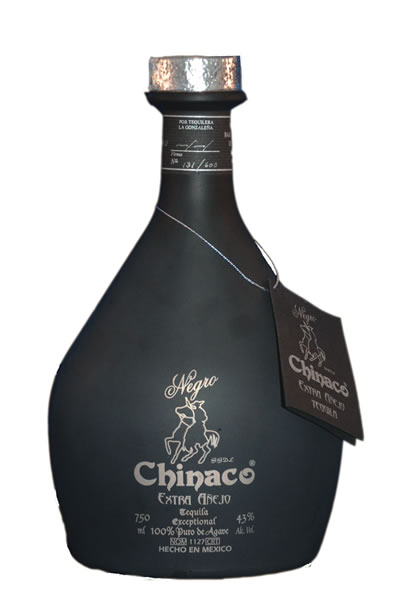 Before ultra-premium tequila stole the show, the first major boost to tequila sales came in the late 1940s with the invention of the margarita, a blend of tequila, orange liqueur and lime juice. Many have staked claim to inventing this international sensation, but most agree it appeared sometime around 1948.
Before ultra-premium tequila stole the show, the first major boost to tequila sales came in the late 1940s with the invention of the margarita, a blend of tequila, orange liqueur and lime juice. Many have staked claim to inventing this international sensation, but most agree it appeared sometime around 1948.
The margarita isn’t the only cocktail tequila shines in, however. “One of the trends we’re seeing in tequila is that people are starting to realize that you can make all kinds of cocktails with tequila because it’s so versatile and mixable,” says Greg Cohen of Patrón Spirits. “Consumers have discovered that the natural agave flavor of the tequila enhances cocktails, and certainly bartenders know it.” Cocktails that are traditionally made with vodka or rum make perfect hosts for tequila, such as the cosmopolitan or mojito.
Another major trend in tequila right now is infusion: “We’re seeing really innovative cocktails showing up on cocktail lists at great places like the St. Regis all over the world,” Cohen says.
“Tequila infuses very well,” explains Bryan Johns, bar manager at The St. Regis Atlanta. “Many people are just discovering that. You can make it into anything you want.” Johns created an award-winning margarita almost two years ago by infusing a bottle of Patrón with pineapple, jalapeno and pink peppercorn, calling it “The Passionate.”
“It’s probably one of the best margaritas you’ll ever have in your entire life,” Johns says.
This sweet and spicy margarita recipe from Bryan Johns, bar manager at The St. Regis Atlanta, won fourth place in Starwood Hotels & Resorts’ worldwide annual cocktail contest last year.
Ingredients:
2 ounces infused Patrón tequila (recipe below)
1 ½ ounces Patrón Citrónge
½ ounce passion fruit puree
2 ounces sour mix
Tajín
Directions: Rim a pilsner glass with Tajín (a spicy salt seasoning). In a shaker, add all ingredients and shake. Strain and pour over ice in the pilsner glass. Garnish with a lime and sprinkle a dash of Tajín over the top of the drink.
Infused tequila: Take one bottle of Patrón tequila and pour into a large container. Add one fresh pineapple, peeled and cored, using only the “meat.” Add one sliced jalepeno, three tablespoons of pink peppercorns, then cover and let sit for a minimum of five days. After five days, remove the jalapeno and throw away. Remove the pineapple and place in a juicer. Juice the pineapple and add the juice back to the tequila, mixing well. Strain the tequila, pineapple and pink peppercorn mixture back into the Patrón tequila bottle. Re-cork, and it’s ready to use.
Burgeoning tequila sales have led to a resurgence in mezcal, the maligned country cousin of tequila that gained a bad rap as being cheap, of poor quality and often containing the notorious worm in the bottle. Mezcal is traditionally made in the Mexican state of Oaxaca and can be made from multiple types of agave.
A few companies are trying to reverse mezcal’s bad reputation by producing a high-quality spirit that can be savored alongside ultra-premium tequila. One such company is Sombra, a micro-batch spirit recommended by Sanchez from The St. Regis Bal Harbour Resort.
“They really owe it to themselves because it really is a different spirit than what they might remember,” Sanchez says.

